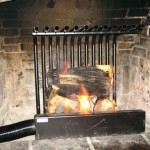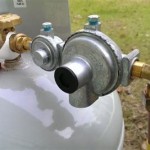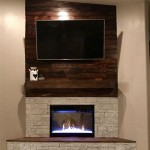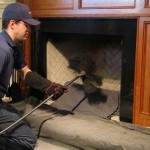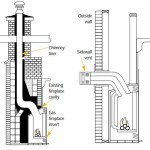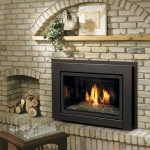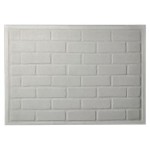Exploring Gas Fireplace Inserts in Portland, Oregon: A Guide to Enhanced Home Heating
Portland, Oregon, known for its cooler, wetter climate, often necessitates efficient and aesthetically pleasing heating solutions for homes. Gas fireplace inserts have emerged as a popular choice for homeowners seeking a balance between warmth, style, and convenience. These inserts offer a modern upgrade to traditional fireplaces and provide a reliable heat source during the colder months. Understanding the various aspects of gas fireplace inserts, from selection criteria to installation considerations, is crucial for Portland residents looking to improve their home heating system.
Gas fireplace inserts are self-contained units designed to fit within an existing fireplace opening. They utilize natural gas or propane to generate heat and offer several advantages over open fireplaces, including improved energy efficiency, reduced emissions, and enhanced safety. The controlled combustion process ensures a cleaner burn, minimizing the release of harmful pollutants into the environment. Furthermore, the enclosed design prevents the loss of heat up the chimney when the fireplace is not in use, contributing to lower energy bills and a more comfortable indoor environment.
The popularity of gas fireplace inserts in Portland stems from their ability to combine functionality with visual appeal. Modern inserts come in a wide array of designs, ranging from traditional log-style models to contemporary glass-enclosed units. This variety allows homeowners to select an insert that complements their existing décor and enhances the aesthetic value of their living space. The ease of operation, often involving a simple on/off switch or remote control, adds to the convenience and user-friendliness of gas fireplace inserts.
Key Point 1: Selecting the Right Gas Fireplace Insert
Choosing the appropriate gas fireplace insert requires careful consideration of several factors. The size of the space to be heated is a primary determinant. BTU (British Thermal Unit) output indicates the heating capacity of the insert. A larger room will require an insert with a higher BTU rating to effectively distribute heat. It is also essential to accurately measure the existing fireplace opening to ensure a proper fit. The dimensions of the insert should be slightly smaller than the fireplace opening to allow for necessary clearances and proper ventilation.
The type of venting required by the insert is another crucial consideration. Direct vent inserts draw combustion air from outside the home and exhaust flue gases directly outdoors through a sealed vent system. This type of venting is generally considered the safest and most efficient option. B-vent inserts, also known as natural vent inserts, utilize the existing chimney to exhaust flue gases. However, B-vent inserts are less efficient than direct vent models and may require additional modifications to the chimney to ensure proper draft and ventilation.
Aesthetic preferences also play a significant role in the selection process. Gas fireplace inserts are available in various styles, including traditional log sets, contemporary glass media, and minimalist designs. The chosen style should complement the overall aesthetic of the room and reflect the homeowner's personal taste. Finishes such as black, brushed nickel, and antique bronze can further customize the appearance of the insert.
Key Point 2: Installation and Safety Considerations
Proper installation is paramount to ensure the safe and efficient operation of a gas fireplace insert. It is strongly recommended to hire a qualified and licensed professional to handle the installation process. Incorrect installation can lead to gas leaks, carbon monoxide poisoning, and other hazardous situations. A professional installer will have the expertise to properly connect the gas line, install the venting system, and ensure that all safety regulations are met. Portland's specific building codes and permit requirements should be carefully followed during the installation process.
Regular maintenance is essential to keep the gas fireplace insert functioning properly and safely. This includes cleaning the glass front, inspecting the venting system, and checking the gas connections for any leaks. A professional inspection should be conducted annually to identify any potential problems and ensure that the insert is operating within safety parameters. Carbon monoxide detectors should be installed in the home to provide early warning of any gas leaks or incomplete combustion.
Safety features are integrated into most modern gas fireplace inserts. These may include safety shut-off valves that automatically turn off the gas supply in the event of a malfunction or gas leak. Overheat sensors prevent the insert from overheating and causing a fire hazard. Tempered glass fronts protect against accidental burns. Familiarizing oneself with these safety features and understanding how to operate them properly is essential for safe use.
Key Point 3: Energy Efficiency and Cost Savings
Gas fireplace inserts offer significant energy efficiency benefits compared to traditional open fireplaces. The sealed combustion chamber prevents heat loss up the chimney, resulting in a more consistent and comfortable indoor temperature. Many gas fireplace inserts are equipped with adjustable thermostats and programmable timers, allowing homeowners to control the heat output and heating schedule to match their needs. This helps to minimize energy consumption and reduce heating costs.
The efficiency of a gas fireplace insert is often measured by its AFUE (Annual Fuel Utilization Efficiency) rating. The AFUE rating indicates the percentage of fuel that is converted into usable heat. Inserts with higher AFUE ratings are more energy-efficient and will result in lower gas bills. Homeowners should consider the AFUE rating when selecting a gas fireplace insert to maximize their energy savings.
While the initial cost of purchasing and installing a gas fireplace insert can be significant, the long-term cost savings can offset the initial investment. Reducing reliance on central heating systems and targeting specific areas for heating can lead to substantial reductions in energy bills over time. Furthermore, some gas fireplace inserts qualify for energy efficiency rebates and tax credits, further reducing the overall cost. Homeowners in Portland should research available rebates and incentives to maximize their savings.
Ultimately, gas fireplace inserts provide a compelling option for Portland homeowners seeking an efficient, stylish, and convenient way to heat their homes. By carefully considering the selection criteria, installation requirements, and energy efficiency benefits, residents can make informed decisions that enhance their comfort and reduce their environmental impact. Engaging with reputable local dealers and installers is crucial for ensuring a successful and safe installation.

Indoor Outdoor Gas Fireplaces Portland Or Nw Natural Appliances

Gas Fireplace Inserts Portland Oregon Hometown Hearth And Grill

Gas Fireplace Stove And Insert Installation Portland Or American

Gas Fireplace Inserts Portland Oregon Hometown Hearth And Grill

Regency Energy Large Gas Insert E33 Portland Fireplace

Fireplace Inserts Portland Oregon Accessories Or

Indoor Outdoor Gas Fireplaces Portland Or Nw Natural Appliances

Gas Fireplace Inserts Portland Oregon Hometown Hearth And Grill

Gas Inserts Portland Fireplace Installations

Gas Fireplace Stove And Insert Installation Portland Or American
Related Posts

